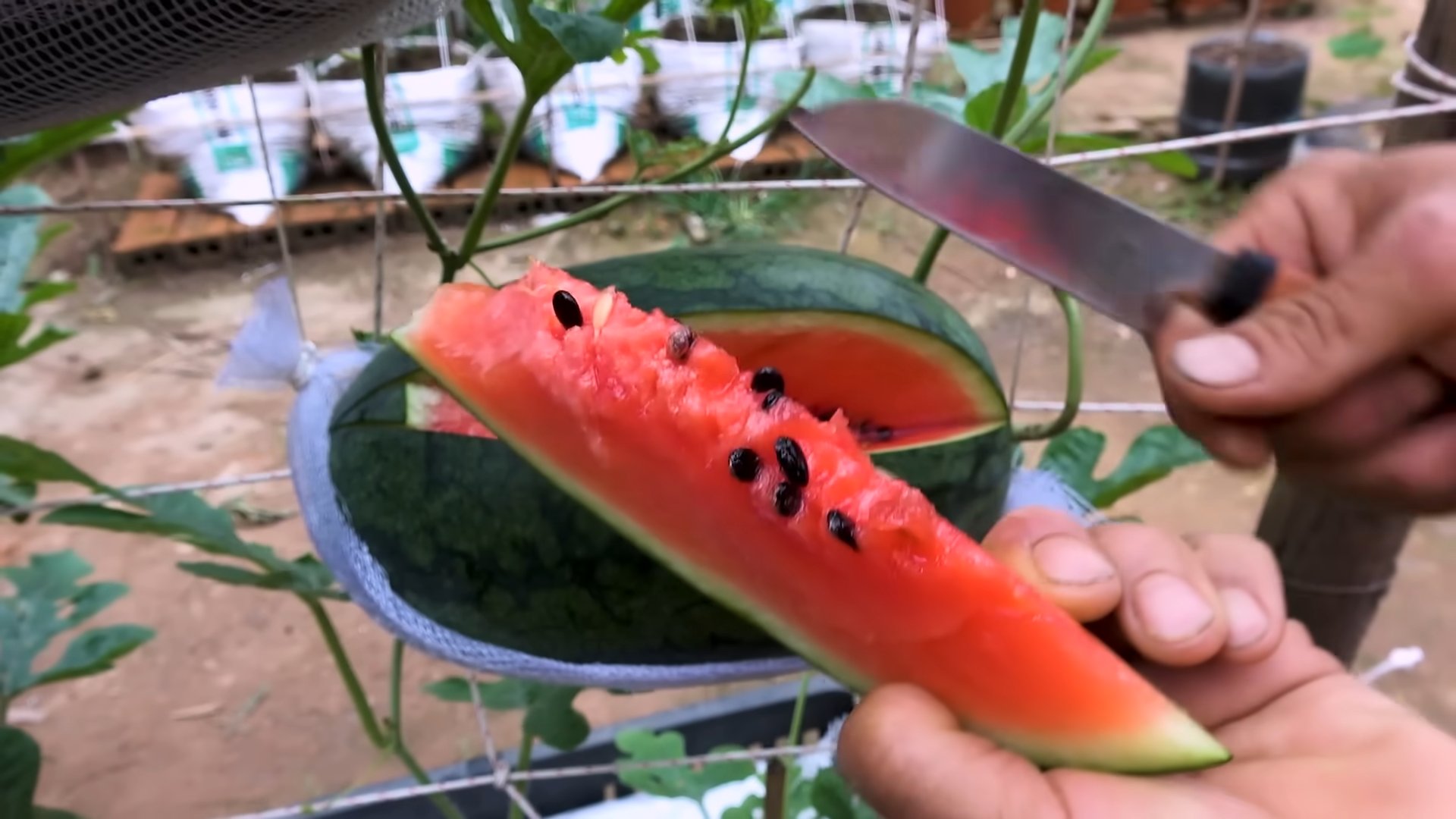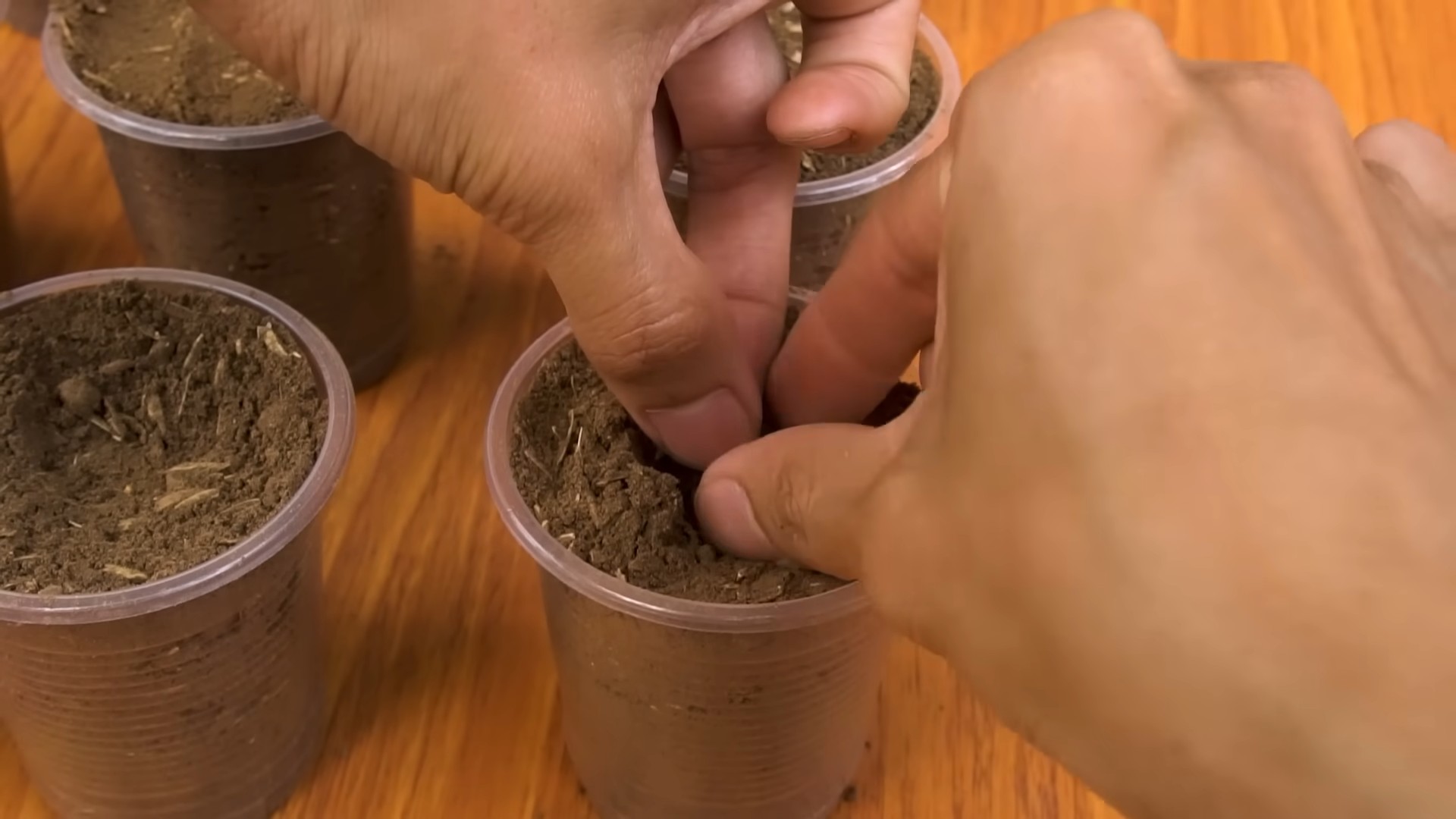DIY Watermelon Sling Guide: Your Ticket to Watermelon Bliss!
Have you ever wrestled a giant watermelon from the farmer’s market, only to dread the awkward, arm-straining journey home? I know I have! For centuries, carrying heavy loads has been a challenge, and while we might not be trekking across the Sahara with our watermelons, the struggle is still real. Think about it – watermelons, symbols of summer picnics and juicy refreshment, deserve a grand entrance, not a clumsy fumble. That’s where this DIY Watermelon Sling Guide comes in!
This isn’t just about convenience; it’s about celebrating the simple joys of summer. Imagine strolling along the beach, watermelon comfortably slung over your shoulder, hands free for building sandcastles or holding an ice cream cone. This DIY project is more than just a practical solution; it’s a statement. It says, “I’m prepared for summer fun, and I’m doing it in style!”
So, why do you need this DIY Watermelon Sling Guide? Because lugging watermelons is a pain! And because I’m going to show you how to create a simple, stylish, and surprisingly strong sling that will make transporting your favorite summer fruit a breeze. Get ready to ditch the awkward carries and embrace watermelon-toting freedom!

DIY Watermelon Sling: Carry Your Summer Treat with Ease!
Okay, friends, let’s be honest. Lugging a watermelon to a picnic or the beach is a *serious* arm workout. And let’s not even talk about the awkward fumbling! That’s why I’m so excited to share this super easy DIY watermelon sling tutorial. It’s a game-changer, trust me. Not only is it practical, but it also looks pretty darn cute. Let’s get started!
Materials You’ll Need
Before we dive in, gather your supplies. You probably have most of these lying around already!
* Heavy-duty fabric: Think canvas, denim, or even a sturdy burlap. I recommend at least 1 yard (36 inches) of fabric, but more is better than less! This will be the main body of the sling.
* Webbing or rope: You’ll need about 6-8 feet of webbing or rope for the handles. Choose something strong and comfortable to hold. I personally love using cotton webbing because it’s soft on my hands.
* Sewing machine (optional): While you *can* hand-sew this, a sewing machine will make the process much faster and more durable.
* Thread: Choose a thread color that complements your fabric.
* Scissors or rotary cutter: For cutting the fabric accurately.
* Measuring tape or ruler: Precision is key!
* Pins: To hold the fabric in place while sewing.
* Marker or fabric chalk: For marking measurements on the fabric.
* Seam ripper (just in case!): We all make mistakes, right?
* Iron and ironing board: For pressing seams and creating a professional finish.
* Optional embellishments: Think fabric paint, stencils, buttons, or patches to personalize your sling!
Cutting the Fabric
This is where we lay the foundation for our watermelon-carrying masterpiece!
1. Prepare your fabric: Wash and dry your fabric to pre-shrink it. This will prevent your sling from warping after its first wash. Iron it smooth to remove any wrinkles.
2. Cut the main fabric piece: You’ll need a large rectangle. The size depends on the size of your watermelons you usually buy. For a standard medium-sized watermelon, I recommend cutting a rectangle that is approximately 36 inches wide and 24 inches tall. If you tend to buy larger watermelons, increase these dimensions accordingly. Remember, it’s better to have too much fabric than not enough!
3. Cut the handle pieces: If you’re using webbing, cut two pieces, each about 3-4 feet long. If you’re using rope, cut two pieces with the same length. The length will depend on how long you want the handles to be. I like mine long enough to comfortably carry the watermelon over my shoulder.
Sewing the Sling
Now for the fun part – bringing our sling to life!
1. Hem the edges of the main fabric piece: Fold over each edge of the rectangle by about 1/2 inch, then fold it over again by another 1/2 inch. This creates a clean, finished edge and prevents fraying. Pin the hem in place and sew along the folded edge using a straight stitch. Repeat this process for all four sides of the rectangle. This step is crucial for durability!
2. Create the “pockets” for the watermelon: On each of the shorter sides (the 24-inch sides in my example), create a deep curve. You can do this by folding the fabric in half lengthwise and using a bowl or plate as a template to trace a curve. The curve should be deep enough to cradle the watermelon securely. Pin along the curve and sew using a straight stitch. Reinforce the seam by sewing over it a second time.
3. Attach the handles: This is where the magic happens! Decide where you want the handles to be positioned. I usually place them about 6-8 inches from the curved edges on each side. Pin the ends of the webbing or rope to the inside of the sling, making sure they are securely attached. You’ll want to reinforce these points really well, as they’ll be bearing the weight of the watermelon.
4. Reinforce the handle attachment points: Sew a square around the base of each handle, then sew an “X” diagonally across the square. This will provide extra strength and prevent the handles from pulling away from the fabric. I like to use a heavy-duty thread for this step.
5. Optional: Add extra reinforcement: For added durability, you can add extra stitching along the curved seams and around the handle attachment points. This is especially important if you’re using a lighter-weight fabric.
Personalizing Your Sling (Optional)
This is where you can let your creativity shine!
1. Fabric paint: Use fabric paint to add designs, patterns, or even your name to the sling. Stencils can be helpful for creating clean, crisp designs.
2. Appliqués: Cut out shapes from other fabric scraps and sew them onto the sling. Consider using watermelon-themed appliqués for a fun, festive touch!
3. Buttons and beads: Sew on buttons, beads, or other embellishments to add texture and visual interest.
4. Patches: Iron-on or sew-on patches are a quick and easy way to personalize your sling.
5. Embroidery: If you’re feeling ambitious, try adding some hand-embroidered details to the sling.
Testing Your Sling
Before you head out with your precious cargo, it’s a good idea to test the sling to make sure it’s strong enough.
1. Place a similar weight object in the sling: Use a bag of potatoes, a bowling ball, or anything else that weighs roughly the same as a watermelon.
2. Lift and carry the sling: Walk around with it for a few minutes to see how it feels and to check for any signs of stress on the seams or handles.
3. Make adjustments if needed: If you notice any weaknesses, reinforce the seams or handles before using the sling with a real watermelon.
Using Your Watermelon Sling
Now for the moment of truth!
1. Place the watermelon in the sling: Carefully position the watermelon in the curved “pockets” of the sling. Make sure it’s sitting securely and evenly balanced.
2. Lift and carry: Grab the handles and lift the sling. Adjust the handles so that the watermelon is comfortable to carry.
3. Enjoy your hands-free watermelon transport! Head to the beach, the park, or wherever your watermelon adventure takes you!
Care Instructions
To keep your watermelon sling in tip-top shape, follow these care instructions:
* Machine wash cold: Wash the sling in cold water on a gentle cycle.
* Hang to dry: Avoid putting the sling in the dryer, as this can cause it to shrink or warp.
* Iron if needed: Iron the sling on a low setting to remove any wrinkles.
And there you have it! Your very own DIY watermelon sling. I hope you found this tutorial helpful and that you enjoy using your sling to carry your summer treats with ease. Happy crafting!

Conclusion
So, there you have it! Crafting your own DIY watermelon sling isn’t just a fun project; it’s a game-changer for enjoying this summer fruit. Forget struggling with slippery slices and messy hands. This simple, homemade solution offers a clean, convenient, and surprisingly elegant way to savor every juicy bite. It’s a practical tool that elevates your watermelon experience from a sticky situation to a delightful treat.
But the benefits extend beyond mere convenience. Think about the environmental impact. By creating your own reusable sling, you’re reducing your reliance on disposable plastic cutlery and plates, contributing to a more sustainable lifestyle. Plus, it’s a fantastic conversation starter at picnics and barbecues! Imagine the impressed looks when you unveil your ingenious creation.
The beauty of this DIY project lies in its adaptability. Feel free to experiment with different materials. While we’ve focused on durable cotton canvas, you could explore using repurposed denim, linen, or even a sturdy, washable outdoor fabric. Consider adding decorative touches like embroidery, fabric paint, or personalized monograms to make your watermelon sling truly unique. For a more secure grip, you could incorporate non-slip material to the inside of the sling.
Another variation involves adjusting the size of the sling to accommodate different watermelon sizes. If you frequently purchase smaller watermelons, consider creating a smaller sling for a snug fit. Conversely, for those giant, family-sized watermelons, a larger sling will provide the necessary support. You can even create a set of slings in varying sizes to cover all your watermelon needs!
Don’t be afraid to get creative with the design. Instead of a simple rectangular shape, you could experiment with curved edges or even incorporate pockets for holding napkins or small utensils. The possibilities are endless!
Ultimately, the DIY watermelon sling is more than just a practical tool; it’s a testament to the power of resourcefulness and creativity. It’s a simple project that yields significant rewards, enhancing your enjoyment of one of summer’s most beloved fruits while promoting sustainability and sparking conversation.
We wholeheartedly encourage you to give this DIY trick a try. It’s a quick, easy, and affordable project that will undoubtedly become a summer staple. Once you’ve crafted your own watermelon sling, we’d love to hear about your experience! Share your photos, tips, and variations in the comments below. Let’s inspire each other to create even more innovative and sustainable solutions for enjoying our favorite foods. What materials did you use? What design modifications did you make? What was the reaction of your friends and family when you unveiled your creation? We’re eager to learn from your experiences and celebrate your creativity! So, grab your materials, unleash your inner DIY enthusiast, and get ready to revolutionize your watermelon-eating experience! You won’t regret it.
Frequently Asked Questions (FAQ)
What type of fabric is best for a DIY watermelon sling?
The best fabric for a DIY watermelon sling is a durable, washable, and food-safe material. Cotton canvas is an excellent choice due to its strength, affordability, and ease of cleaning. Other suitable options include denim, linen, and sturdy outdoor fabrics. Avoid using fabrics that are too thin or delicate, as they may not be able to support the weight of the watermelon. Also, ensure that the fabric you choose is free from harmful chemicals or dyes that could leach into the watermelon. Consider pre-washing the fabric before sewing to prevent shrinkage after the sling is completed.
How do I clean my DIY watermelon sling?
Cleaning your DIY watermelon sling is essential to maintain hygiene and prevent the growth of bacteria. After each use, rinse the sling thoroughly with warm water to remove any watermelon residue. For more thorough cleaning, you can wash the sling in a washing machine using a gentle cycle and mild detergent. Avoid using harsh chemicals or bleach, as they can damage the fabric and potentially contaminate the watermelon. After washing, hang the sling to air dry completely. Avoid using a dryer, as the heat can cause the fabric to shrink or warp. If the sling has stubborn stains, you can pre-treat them with a stain remover before washing. Regular cleaning will help to keep your watermelon sling fresh and hygienic for years to come.
Can I use different types of straps for the watermelon sling?
Yes, you can definitely experiment with different types of straps for your watermelon sling. While the tutorial may suggest using fabric straps made from the same material as the sling, you can also use webbing, rope, or even repurposed belts. The key is to choose straps that are strong, durable, and comfortable to hold. Consider the length and width of the straps to ensure they provide adequate support and are easy to grip. You can also add padding to the straps for extra comfort, especially if you plan on carrying heavy watermelons. When attaching the straps to the sling, make sure to use strong stitching or rivets to ensure they are securely fastened.
How do I adjust the size of the watermelon sling for different sized watermelons?
Adjusting the size of your watermelon sling is crucial for ensuring a snug and secure fit for different sized watermelons. The easiest way to adjust the size is to create multiple slings in varying sizes. This allows you to choose the appropriate sling based on the size of the watermelon you are using. Alternatively, you can design a sling with adjustable straps or closures. For example, you could add Velcro straps or buckles that allow you to tighten or loosen the sling as needed. Another option is to create a sling with a drawstring closure, which allows you to cinch the sling around the watermelon for a secure fit. When adjusting the size of the sling, make sure that the watermelon is securely supported and will not slip out during transport.
Is a DIY watermelon sling safe to use?
Yes, a DIY watermelon sling is generally safe to use, provided that you follow certain precautions. First, ensure that the materials you use are food-safe and free from harmful chemicals. Second, make sure that the sling is strong enough to support the weight of the watermelon. Use durable fabrics and strong stitching to prevent the sling from tearing or breaking. Third, always supervise children when they are using the watermelon sling. Fourth, avoid using the sling to carry watermelons over long distances or in crowded areas, as this could increase the risk of accidents. Finally, inspect the sling regularly for any signs of wear and tear, and repair or replace it as needed. By following these safety guidelines, you can enjoy your DIY watermelon sling with peace of mind.
What are some creative design ideas for a DIY watermelon sling?
The possibilities are endless when it comes to creative design ideas for your DIY watermelon sling! Consider adding decorative touches like embroidery, fabric paint, or personalized monograms to make your sling truly unique. You could also experiment with different fabric patterns and colors to create a visually appealing design. For a more functional design, consider adding pockets to the sling for holding napkins, utensils, or even a small knife for slicing the watermelon. You could also incorporate a non-slip material to the inside of the sling for a more secure grip. Another idea is to create a sling with a built-in cutting board, allowing you to slice the watermelon directly on the sling. Get creative and let your imagination run wild!
Where can I find inspiration for my DIY watermelon sling project?
Finding inspiration for your DIY watermelon sling project is easier than you might think! Online platforms like Pinterest and Instagram are treasure troves of creative ideas. Search for “DIY watermelon sling,” “fabric sling,” or “summer picnic ideas” to discover a wealth of images and tutorials. Craft blogs and websites are also excellent resources for finding detailed instructions and design inspiration. Don’t forget to check out your local fabric store or craft supply shop. Browsing through different fabrics, patterns, and embellishments can spark your creativity and help you come up with unique design ideas. Finally, consider looking at existing products like reusable shopping bags or baby slings for inspiration on construction and functionality.




Leave a Comment